Switch to the mobile version of this page.
Vermont's Independent Voice
- News
- Arts+Culture
- Home+Design
- Food
- Cannabis
- Music
- On Screen
- Events
- Jobs
- Obituaries
- Classifieds
- Personals
Browse News
Departments
-
Education

Scott Official Pushes Back on Former State…
-
News

Burlington Budget Deficit Balloons to $13.1 Million
-
Education

Senate Committee Votes 3-2 to Recommend Saunders…
- Court Rejects Roxbury's Request to Block School Budget Vote Education 0
- Norwich University Names New President Education 0
- Media Note: Mitch Wertlieb Named Host of 'Vermont This Week' Health Care 0
Browse Arts + Culture
View All
local resources
Browse Food + Drink
View All
Browse Cannabis
View All
-
Culture

'Cannasations' Podcaster Kris Brown Aims to 'Humanize'…
-
True 802

A Burlington Cannabis Shop Plans to Host…
-
Business

Judge Tosses Burlington Cannabiz Owner's Lawsuit
-
Health + Fitness

Vermont's Cannabis Nurse Hotline Answers Health Questions…
-
Business

Waterbury Couple Buy Rare Vermont Cannabis License
Browse Music
View All
Browse On Screen
Browse Events
Browse Classifieds
Browse Personals
-

If you're looking for "I Spys," dating or LTRs, this is your scene.
View Profiles
Special Reports
Pubs+More
Obstruction Zone: How Vermont’s Land-Use Regulations Impede New Development — and Complicate the State’s Housing Crisis
Locked Out Series, Part 2
Published April 6, 2022 at 10:00 a.m. | Updated December 6, 2022 at 8:05 p.m.
For housing developers in Vermont, Safford Commons epitomizes a particular kind of nightmare.
The project's two nonprofit developers, Twin Pines Housing and Housing Vermont, now known as Evernorth, first appeared before the Woodstock Village Development Review Board in 2006 with a proposal to develop 28 mixed-income apartments and condominiums on the site of a former Grange hall across from Woodstock Union High School. Neighboring property owners — who felt, among other things, that the cluster of energy-efficient, cottage-style rentals on eight acres would detract from the landscape — immediately organized to stop the development.
The neighbors first appealed Safford Commons' town permit in environmental court. After five years and multiple lawsuits, the neighbors lost. But they had another tactic: The project was large enough that it also had to undergo environmental review under Act 250, Vermont's 52-year-old land-use law. Act 250 allows abutting property owners to challenge developments, and the neighbors seized the chance to deal the project a final blow.
Seven Days is examining Vermont's housing crisis — and what can be done about it — in our "Locked Out" series this year. Send tips to [email protected].
These stories are supported by a grant from the nonprofit Journalism Funding Partners, which leverages philanthropy and fundraising to boost local reporting. For more information, contact Corey Barrows at [email protected] or visit jfp-local.org.
They took their case all the way to the Vermont Supreme Court, which ultimately ruled in favor of the developers. After eight years of legal wrangling, Safford Commons finally broke ground in 2014. Within 10 days of its completion, in September 2015, all 28 units had been leased, and 40 families had joined a waiting list. By that point, the project's price tag had grown by $1.5 million — to $9.4 million — as a result of stalemate-related attorney's fees, loan interest and increased construction costs.
The protracted battle consumed resources that might have gone into other projects, explained Nancy Owens, copresident of Evernorth.
"What that means is, we built less housing because this project became so expensive," Owens said.
One of the major reasons for the state's chronic housing shortage, in her view, is Vermont's complicated regulatory model for new development, which is made more unpredictable by the ungovernable human resistance to change. The result is an ever-widening disconnect between supply and demand.
To keep up with growing need, the state would have to build a minimum of 5,800 homes and apartments by 2025, and more than triple that to address the broader affordability crisis, according to a 2020 report by the Vermont Housing Finance Agency. Meanwhile, the overall growth of housing stock in Vermont has fallen in recent decades to a third of what it was in the 1980s.
"At a time when there's such a desperate need for more housing, when people are suffering because they have no housing at all or because they're paying too much for housing and can't afford the other necessities of life, I think we could look at our system and decide to change it," Owens said.
One Vermont city has done just that. In Winooski, Tom Getz Jr.'s experience couldn't have been more unlike the Safford Commons saga: The CEO of South Burlington-based Summit Properties walked into the local planning department in November 2017 seeking permission for a four-story apartment complex just east of downtown. Two months later, he had all his local permits. Two years after that, people were moving into Casavant Overlook's 39 apartments, most of which are affordably priced for renters who earn between 80 and 120 percent of the area median household income. No one went to court. No one even appealed.
"That project is a shining example of how it can be done," Getz said.
The boxy apartment building, with its earth-toned shiplap and brick siding, and a larger one across East Allen Street called Parc Terrace, sailed through the approval process for one reason: Winooski made the permitting as painless as possible.
The city accomplished this, in part, because it had adopted a type of zoning called form-based code, which streamlines the approval process by prescribing strict criteria for the physical attributes of a building — how it should be oriented in relation to the street, its ratio of windows to façade, even the construction materials. Public hearings are not required; instead, proposals that conform to those specifications get administrative approval.
The upshot is that projects rarely get held up by unhappy residents, according to Winooski city planner Eric Vorwald, because the form-based code acts, essentially, as a pass-fail test. Of the dozen or so proposals Vorwald has reviewed under form-based code, he said, only two have been appealed.
Equally important to Getz's success in Winooski: Mixed-income housing projects are exempt from Act 250 if they're in the former mill town's state-designated "neighborhood development area" — one of only nine in the state — that surrounds most of the downtown.
"The combination of those two things made development in Winooski so much more cost-efficient and predictable," Getz said. "That's a big part of the reason we chose those locations."
Bill Allen is thrilled that they did. The 62-year-old retired chef was living in another apartment in downtown Winooski and struggling to pay the $1,800-a-month rent on his disability income when he saw Casavant Overlook going up nearby.
He checked it out, qualified for an affordable unit and now pays $600 less per month for a larger, modern apartment with high ceilings and a kitchen fit for his culinary skills. "I love it," Allen said. "If this wasn't here, I'd probably have to get a roommate or live in a ratty apartment."
With the median home price in Vermont around $325,000 and 1,800 people still being sheltered in local motels, the state is under intense pressure to speed up housing production. Powerless to influence the cost of lumber or the soaring demand for housing from pandemic and climate migrants, lawmakers are increasingly eyeing one of the few factors they can control — the thicket of state and local regulations. Developers, policy makers, and state and local planners argue that the dual exigencies of local zoning and Act 250 have stifled the kind of growth the state needs: compact, walkable neighborhoods in downtowns served by public infrastructure.
A proper pruning, they contend, is long overdue.
Old-School Rules
For decades, Vermont has tried to limit sprawl by steering growth to town and village centers. But the majority of new homes are still constructed outside of downtowns.
At the local level, where the permitting process begins, the state has encouraged planners to revamp their outdated residential zoning codes — which, in many cases, still reflect the country's mid-20th-century suburban emphasis on single-family homes. This year, the state awarded a total of $500,000 in "bylaw modernization" grants to help 41 municipalities update their zoning codes to encourage housing growth, and one of the bills currently making its way through the legislature contains $650,000 for a second round of grants in 2023.
In a sense, these zoning-reform efforts are about "getting back to our roots," said Chris Cochran, director of community planning and revitalization in the Department of Housing and Community Development.
"If you look at our historic neighborhoods, this is what Vermont used to be — duplexes and triplexes, which are both traditional housing types," he said. "It makes no sense that so many communities have midcentury zoning that makes this practical and affordable approach to housing illegal or overly complicated."
But in matters of land use, the municipal can quickly become personal.
"You're talking about people's homes and neighborhoods and places where their kids have grown up," said Jen Hollar, the director of policy and special projects at the Vermont Housing & Conservation Board, which supports sustainable community growth. "People really want to know what's going to happen, and it's easy to become fearful about what change might look like."
That same anxiety drove the 1970 creation of Act 250. Enacted in response to rapid development in ski towns, the law was intended to serve as an arbiter for large building projects by ensuring their compatibility with the surrounding environment. The review process, administered by nine local volunteer commissions, assesses and seeks to minimize the impacts of proposed developments — not only on wetlands, shorelines and wildlife habitat but also on communities. Act 250 considers: Will the growth put a strain on schools, roads and utilities?
"Neighborhood development areas" aside, in towns with zoning codes, all projects of 10 housing units or more currently need an Act 250 permit; in towns without zoning, any proposal with six units or more must undergo review.
Those who have opinions about the landmark law generally have strong ones. "At this point, I think anyone who is fighting to preserve Act 250, as it is, is a proponent for the gentrification of Vermont, because that is what's happening," said Joshua Jerome, Randolph's director of economic development. He's one of many planners and developers who argue that zoning and environmental regulations have advanced in so many towns since 1970 that requiring Act 250 permits, on top of local ones, is expensive, time-consuming and duplicative — and gives opponents too many avenues to challenge needed projects. Jerome said more projects, especially those proposed in already developed areas, should be exempted from Act 250.
Others are skeptical that limiting Act 250's reach would fast-track housing construction. They note that most Act 250 applications are approved swiftly, and studies show that other factors, such as the cost of building material, land and labor, play a much larger role in development decisions.
"I think exemptions to Act 250 are fundamentally a bad idea," Sen. Dick McCormack (D-Windsor) said. "Act 250 provides a benefit, and I don't like denying the people of Vermont these benefits." Fellow fans of the law maintain that the state owes its scenic vistas to Act 250 and hope that the law remains sufficiently robust to give Vermont's forests and pastures a fighting chance against encroaching development. While they agree the law needs updating and could be administered better, they maintain that it is a crucial bulwark against sprawl.
The residents of Burlington's Fletcher Place are certainly grateful for it. For seven years, they've been fighting a developer who wants to shoehorn a 71-unit apartment complex into their neighborhood across the street from the University of Vermont Medical Center.
"If we didn't have Act 250, we'd be up shit's creek without a paddle," said Bob Butani, a resident leading the fight against the project that would be, quite literally, in his backyard. City planners and boards signed off on developer Frank von Turkovich's proposed three-story building on the edge of a steep, wooded ravine, but it wasn't until the Act 250 review that questions arose about the stability of the hillside. The Chittenden County Act 250 district commission opened a hearing on the project in 2020. In response to expert testimony and a state geological report, the commission asked for additional information from von Turkovich, including evidence that the apartment building wouldn't slide into the gully, according to Aaron Brondyke, the state Act 250 coordinator for the project. The commission is still waiting for the information before the hearing resumes, he said. Von Turkovich declined to comment for this story.
"I think it's an example of where the Act 250 process adds value, because it's a holistic and comprehensive review that engages all of the relevant parties," Brondyke said.
Butani said he understands the need for housing and the argument that permit processes could be streamlined in some cases. He just doesn't think this is one of them.
"Act 250 is not anti-developer," Butani said. "Act 250, in my opinion, protects the public."
Whither Act 250?
Act 250 has proven notoriously difficult to reform in recent years, in large part because of the fervor it inspires. Legislative efforts have bogged down or blown up amid disagreements between the administration of Gov. Phil Scott, who views the law as a fundamental impediment to growth, and environmental groups seeking tougher protections for natural areas.
That impasse has persisted even after a legislative commission spent two years vetting proposals to improve Act 250 regulations and, in 2019, delivered a dense, 84-page report with dozens of suggested fixes, most of which have gone nowhere.
People's views on the law are often based more on anecdotes than on data, said Sen. Chris Bray (D-Addison), chair of the Senate Natural Resources and Energy Committee, and that makes consensus difficult to reach. "I don't know of any law that has more mythology around it than Act 250," he said.
As efforts to reform Act 250 have foundered, the administration's focus has shifted to allowing a wider range of projects to skirt it. Over the years, state housing officials have created incentives to lure developers to downtowns, mostly by establishing zones where special tax credits or permitting exemptions apply to projects that include affordable housing.
Half a mile from Fletcher Place, in Burlington's Old North End, Champlain Housing Trust built a 40-unit complex, Bright Street Co-op, in a neighborhood development area — just like the one in Winooski — in 2016. The nonprofit developer estimates that the official designation saved it $54,000 in fees and three months of permitting time.
Such special zones— including 220 "village centers," 23 "downtowns," six "growth centers" and three "new town centers" — make Vermont a regulatory patchwork.
"It is a layered and kind of confusing framework," Cochran told lawmakers in Bray's committee last month as they struggled to tweak the rules to encourage denser housing.
Burlington applied for and received its neighborhood development area in 2014. In such zones, so-called "priority housing projects," in which 20 percent of the units are affordable, are generally exempt from Act 250 review — a significant incentive for developers.
Today, lawmakers under pressure to get more housing built quickly are embracing an expansion of Act 250 exemptions as a key strategy.
"There is real momentum on this issue right now," said Rep. Seth Bongartz (D-Manchester), who cosponsored a bill to spur housing in more town centers.
Bongartz's bill, which has now been folded into a larger housing bill, S.226, would require neighborhood development areas to be zoned to allow at least four units per acre.
A related bill focusing on Act 250 reforms, S.234, would double the number of units allowed in exempt housing projects in small towns, to 50.
Another proposal would allow Act 250 exemptions in the flood-prone areas of dozens of communities.
One of those flood-prone areas is in Manchester, whose tourist-friendly downtown was built along the Battenkill River. The town relies on service workers, who have been priced out of its tony real estate market. So Manchester established a neighborhood development area in 2018 to encourage the development of housing that workers could afford.
But that program, established just two years after Tropical Storm Irene devastated Vermont, intentionally excluded certain flood-prone parcels.
"There's a sense that what we did after Irene in the circumstances made total sense," Bongartz said, "but now we're taking a step back and saying, 'Maybe we overreacted a bit.'"
The town owns a parcel along the river that is ideal for infill housing, but the restriction means it could not be exempted from Act 250 review. That makes no sense to Janet Hurley, Manchester's director of planning and zoning.
"We have a housing crisis," she said, "but the state is working at cross-purposes with itself and can't get on the same page about anything." She added, "It's sad."
The proposed change would allow towns to build Act 250-exempt projects in downtown "river corridors" if they protected the waters upstream and downstream.
Another point of exemption contention: Should towns without sewer systems be able to skirt Act 250? Currently, neighborhood development areas can only be formed in the 107 Vermont municipalities with public sewer systems — disqualifying more than half of the state's towns.
That makes it doubly difficult for small communities, which already struggle to attract affordable housing projects.
"Those infrastructure limitations are by far a greater challenge than lots of the other considerations we have to deal with," said Patrick Shattuck, the executive director of RuralEdge, an affordable housing developer that manages 700 units throughout the Northeast Kingdom. Applicants typically wait up to four years for a RuralEdge apartment to open up.
Legislators are considering a proposal that would let towns without municipal sewers qualify for Act 250 exemptions anyway. Many towns have enough space for soil-based treatment systems, such as septic tanks with leach fields or mound systems, officials say.
"We're trying to create solutions that work for all parts of the state," Cochran said.
James Ehlers, public policy director of Lake Champlain International, opposes this concept. He notes that soil-based treatment systems pose a greater risk of polluting waterways or groundwater.
"Clearly, there are not enough safeguards in place if we just look at the state of our brown rivers and green lakes and our obligation to protect public health," Ehlers said.
Last May, in negotiations over a Senate bill, he helped scuttle an effort to eliminate the current requirement for developers to get state and local water and wastewater permits.
Supporters argue that the dual-permit system is unnecessary and costs developers money. Ehlers counters that eliminating state oversight would merely make it easier for developers to hook up to municipal systems that regularly get overwhelmed by heavy rainfall and spill untreated wastewater into nearby creeks, rivers and lakes.
The pressure to simplify water permitting is back on this year, and Ehlers and his allies are again bombarding lawmakers with emails opposing what they call a "license to pollute."
The effort to attract more downtown housing runs counter to Vermont's development pattern in recent decades and therefore will be difficult to shift. Fully 77 percent of new housing built in the state was outside of downtown areas, according to state analysis. Much of that development was too small to trigger Act 250 review. That's why environmental groups such as the Vermont Natural Resources Council argue that any relaxation of oversight in urban areas needs to be paired with stronger protections for forests.
VNRC executive director Brian Shupe would like to see Act 250 strengthened. He told Bray's committee members that they "and the administration should treat the loss of our resource and forest lands with the same urgency" with which they're addressing the housing crisis.
Legislating Location
In 2015, a fire damaged an apartment in a four-unit building in Hinesburg's village center. The 1850s-era structure, a former post office with embellished cornices and a cantilevered second-story porch, had rental apartments on its upper floors long before Hinesburg enacted zoning. But when the owner of the building tried to restore the fourth apartment, Hinesburg's density allowances wouldn't permit that many units on the third-of-an-acre lot.
"You know there's something wrong with your zoning when you can't permit the very same thing you already have," said Alex Weinhagen, Hinesburg's town planner.
The legal framework for contemporary zoning in America originated with the 1926 Supreme Court case Village of Euclid v. Ambler Realty Co., which enshrined the right of municipalities to create separate districts for housing, commerce and industry. Zoning was conceived as a means of keeping order; it could separate churches from chemical plants, but also the rich from the poor. The court's verdict reflected the sentiment that certain types of homes — and, therefore, certain types of people — did not belong among other kinds of homes.
"[Very] often the apartment house is a mere parasite, constructed in order to take advantage of the open spaces and attractive surroundings created by the residential character of the district," the 1926 decision reads. Explicitly racist zoning ordinances were deemed unconstitutional in 1917, but exclusionary policies have persisted in practice, most commonly through density allowances and minimum lot sizes that prevent multifamily housing. In many cities, according to a 2019 analysis by the New York Times, 75 percent of residential land is zoned to effectively rule out anything other than a freestanding, single-family home.
Few Vermont municipalities had formal zoning until the '50s and '60s, according to Cochran. Around that time, towns adopted bylaws based on national policy guides whose recommendations generally favored single-family homes along wide, car-friendly streets. Under those ordinances, Cochran explained, the clustered, mixed-use development pattern of many of the state's historic downtowns and villages would be impossible to build today.
Density allowances, which cap the number of housing units that can be built on a given lot, often doom projects before they begin. Last year, the Addison County Community Trust tried to buy a rambling Victorian a few blocks from downtown Bristol that had previously housed an assisted living facility. ACCT executive director Elise Shanbacker wanted to convert the property into four or more affordable apartments.
But Bristol's zoning codes wouldn't allow anything larger than a duplex on the half-acre site. Shanbacker scrapped the idea, and the house sold at the end of last year, for $323,500, as a nine-bedroom, single-family residence.
"Real estate development is so site-specific, and the chances that some zoning-related idiosyncrasy will arise and kill the deal are really high," said Shanbacker.
Last month, ACCT was in talks with Saint Paul's Episcopal Church in Vergennes about acquiring its rectory, a small brick house that has served as a residence for more than two centuries. The church is in the commercial district of Vergennes, where zoning prohibits residential use of the first floor.
To sell the rectory, Shanbacker explained, the church would have to subdivide it from the rest of the property, which would force the rectory's new owner to adhere to the first-floor commercial zoning rules.
"The only way the church can sell the rectory as a house is to sell it and the church," Shanbacker said. "Who wants to buy a church with their house?"
New Rules
Historically, the state hasn't paid much attention to municipal zoning, according to Cochran. "Vermont has kind of chronically underfunded planning," he said. "And updating local bylaws is not fun work. It's all done by volunteers, it's complicated work, and it's complicated to get right."
This year, thanks to the federal American Rescue Plan Act, Vermont will spend $500,000 to help towns rewrite their zoning bylaws. The grant program represents one of the state's biggest investments to date in trying to usher Vermont's local land-use practices into the 21st century.
"Typically, we might have funded five municipal zoning bylaw projects in a year," said Jacob Hemmerick, a planning and policy manager in the Department of Housing and Community Development who also happens to be the mayor of Barre. "And now, we're funding 23 projects in 41 municipalities, which I think reflects the grassroots pressure at the local level to do something about the housing crisis."
But more sweeping measures — such as eliminating single-family zoning altogether, as the State of California did last year — are not on the table.
"Zoning reform literally touches people where they live, so it can be politically unpopular," said Cochran.
Earlier this year, the South Burlington City Council narrowly approved a set of controversial changes to its zoning bylaws that prevent development on more than two-thirds of the land in the wealthiest part of town. The new regulations mandate that landowners in that area conserve 70 percent of their acreage and prohibit all development in wildlife corridors.
The council vote ended a debate that began in 2018, after a group of residents campaigned to stop a subdivision in that section of the city. After the regulations passed, in February, developers Jeff Nick and Jeff Davis sued the city, alleging that the new restrictions constituted the unlawful seizure of roughly a third of their 112-acre property.
Developers and affordable housing advocates say the rules will prohibit sorely needed housing near the job centers of Chittenden County and exacerbate inequality. "My biggest fear is that they will have bad outcomes for equity within the community and not allow people of all incomes to purchase or rent homes in that part of the city," Charlie Baker, executive director of the Chittenden County Regional Planning Commission, told Seven Days.
Hinesburg, a bylaw modernization grant recipient, has amended its zoning over the years to support housing growth on the surrounding undeveloped land, said Weinhagen, the town planner. A former farming town first settled in 1762, and the birthplace of a produce storage method advertised as "the imperishable potato," Hinesburg has grown in recent decades into a thriving suburb of Burlington.
But as its population has increased, the town hasn't addressed many of the impediments to making the village center more hospitable to new projects, said Weinhagen. With $20,570 in grant funding, he hopes to remove some of the barriers to housing growth in the town's main commercial district, where breweries, car repair shops and farmers markets have sprung up among old New England homes. The town's current parking standards and density restrictions, he explained, aren't conducive to developments in that area.
But past efforts to steer new development into the already built-up village center, said Weinhagen, have met public resistance. When Hinesburg revamped its zoning codes in 2009, the planning commission pitched residents on its vision for a denser downtown, with multistory apartment buildings lining the main thoroughfares. The pushback, Weinhagen recalled, was intense.
"People just gasped," he said. "They said, 'That's not Hinesburg! That's South Burlington! I don't want Hinesburg to look like that!'"
Bylaw Blocks
click to enlarge 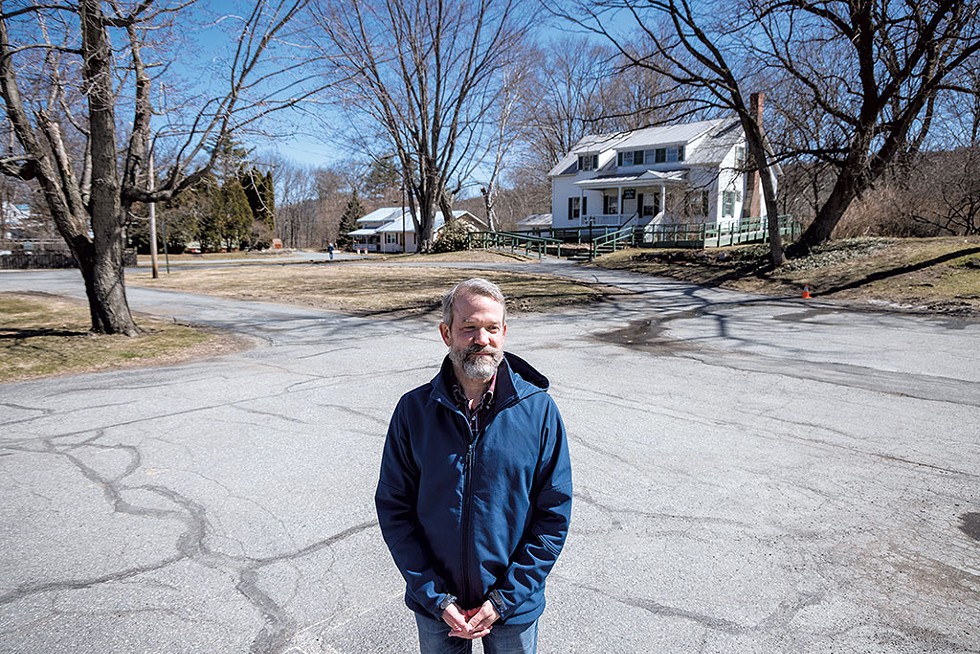

- Emily Pogozelski
- Andrew Winter on the site of the proposed 18-unit building in Hartford
In the end, the fate of a proposed housing project often depends less on a town's zoning codes than on the community's willingness to accept what might be allowed. "What it often boils down to is this very broad idea of compatibility with the neighborhood," said Owens of Evernorth, one of the developers behind the long-delayed Safford Commons project.
And even as everyone professes to agree on the need for housing, the minutiae of zoning and Act 250 — the parking space allotments, the conservation requirements, the stormwater management plan — offer plenty of mechanisms to stall a project indefinitely.
In December, Twin Pines Housing, the other nonprofit developer who worked on Safford Commons, submitted an application to the Hartford Planning Commission for an 18-unit affordable housing project on a parcel of land that belongs to St. Paul's Episcopal Church, just off Route 5 in the village of White River Junction. On the same parcel, Upper Valley Haven, a nonprofit that serves the homeless, plans to develop a 20-bed emergency shelter.
The local zoning in that area would permit up to 14 housing units, according to Hartford planning director Lori Hirshfield. To build 18 apartments, Twin Pines had to apply for a special permit. The developers have to demonstrate that the project would provide the community an added benefit, explained Hirshfield — for instance, through outstanding building design or ecological stewardship.
During the February 14 hearing, one planning commission member said he was troubled by how an 18-unit affordable housing development, combined with a homeless shelter, might impact the "character of the area," according to the meeting minutes.
Another member noted that she had received lots of comments from residents who were "concerned with safety." Andrew Winter, the executive director of Twin Pines Housing , assured the commission that the Upper Valley Haven shelter next door would be staffed 24-7.
Other commission members suggested that the design of the apartment building, which featured a flat roof, would be out of sync with the surroundings, and that a pitched roof might be more appropriate. Several Hartford residents also voiced objections; one said she understood the need for more affordable housing but that she no longer felt safe in her neighborhood.
After some deliberation, the commission determined that Twin Pines' proposal didn't sufficiently preserve trees and other natural resources, nor did it "create a more desirable environment." They unanimously denied the application.
Winter, Twin Pines' executive director, said such setbacks aren't uncommon. Several years ago, he said, Twin Pines built an affordable housing project on a contaminated site in Wilder, a village in the jurisdiction of Hartford. The town initially approved the project, but neighbors contested the permit in environmental court. Their complaint: They didn't like the flat roofs Twin Pines had proposed. Twin Pines agreed to build pitched roofs instead. The project moved forward.
Last month, Twin Pines submitted a revised proposal for the St. Paul's site, with more trees, a new fence and pitched roofs. The planning commission will take up the application at the end of April; if it's approved and all else goes according to plan, said Winter, construction on the project would likely begin in the fall.
He acknowledged, delicately, that he didn't think the trees and the roof design would be getting quite so much scrutiny if he were proposing market-rate housing. But he also pointed out that the town has taken a stab at making other neighborhoods more welcoming to multifamily housing. He's optimistic, he said, that the commission will support the new proposal.
"We really can't afford not to be producing housing," Winter said.
In Hartford, the town zoning codes are about to undergo a reboot with the help of the Two Rivers-Ottauquechee Regional Commission, which won a $66,000 state grant to help seven area towns update their codes. Even in the face of a daunting crisis, Cochran, the state housing official, thinks that slow, methodical reform is the kind that will stick.
"Vermont's a local-control state," said Cochran. "I think what works here is incremental change — a municipality says, 'Hey, we made some changes and got some new families, and our schools are full,' and then the community next door says, 'Hey, that wasn't so bad. We can do that, too.'
"That, I think, is the right way to make change happen," he continued.
As state officials debate these piecemeal reforms, people such as Agatha Doe have no choice but to wait. Doe and her four children spent more than six months crammed into one bedroom in her brother-in-law's house in South Burlington while she searched for an apartment she could afford. Finally, in December, after nine months on three different Champlain Housing Trust property waiting lists, she got a two-bedroom place at South Meadow in Burlington for $1,009 a month. She no longer has to worry about blocking anyone in the driveway; she can go into her room and be alone.
But for Doe, the uncertainty of those nine months without a permanent roof over her head took its toll. "You just start to feel crazy," said Doe. "It's the system, and there was nothing I could do to change it."
This story has been updated to clarify the types of projects funded by the Department of Housing and Community Development.
 Seven Days is examining Vermont's housing crisis — and what can be done about it — in our Locked Out series this year. Send tips to [email protected]. These stories are supported by a grant from the nonprofit Journalism Funding Partners, which leverages philanthropy and fundraising to boost local reporting.
Seven Days is examining Vermont's housing crisis — and what can be done about it — in our Locked Out series this year. Send tips to [email protected]. These stories are supported by a grant from the nonprofit Journalism Funding Partners, which leverages philanthropy and fundraising to boost local reporting.
Got something to say?
Send a letter to the editor
and we'll publish your feedback in print!
Tags: Housing Crisis, Locked Out, Act 250, land-use law, land-use
About The Authors

Chelsea Edgar
Bio:
Chelsea Edgar is a staff writer for Seven Days, and has written for BuzzFeed and Philadelphia magazine.
Chelsea Edgar is a staff writer for Seven Days, and has written for BuzzFeed and Philadelphia magazine.

Kevin McCallum
Bio:
Kevin McCallum is a political reporter at Seven Days, covering the Statehouse and state government. He previously was a reporter at The Press Democrat in Santa Rosa, Calif.
Kevin McCallum is a political reporter at Seven Days, covering the Statehouse and state government. He previously was a reporter at The Press Democrat in Santa Rosa, Calif.
Latest in Category
Speaking of...
-

Vermont Lawmakers May Have to Meet Growing Problems With a Shrinking Budget in 2024
Dec 20, 2023 -

Ecologists, Neighbors Protest Colchester Rec Center Construction
Jul 5, 2023 -

Site Work: Bills Would Chip Away at Rules Curbing Home Construction
Mar 8, 2023 -

Housing Bills Take Aim at Local Control in Vermont Towns
Jan 16, 2023 -

Sugarbush Resort to Build Worker Housing Near Mountain
Jan 13, 2023 - More »




























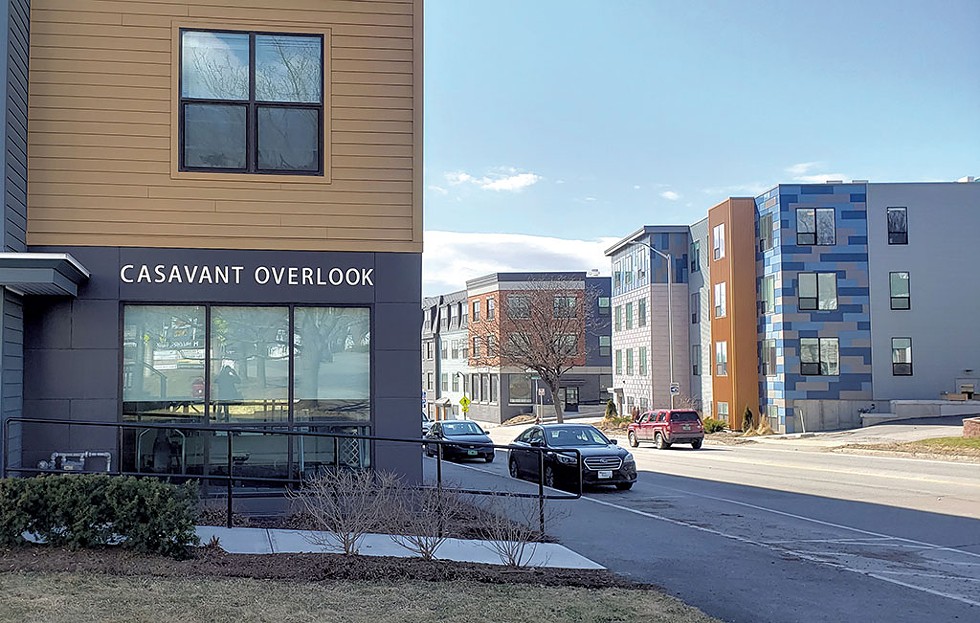
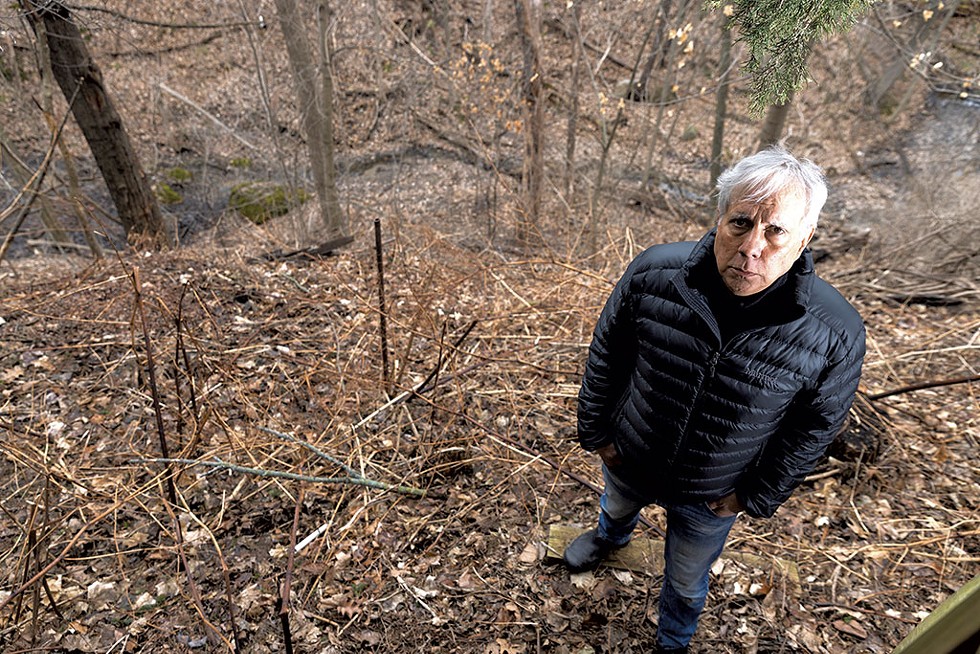
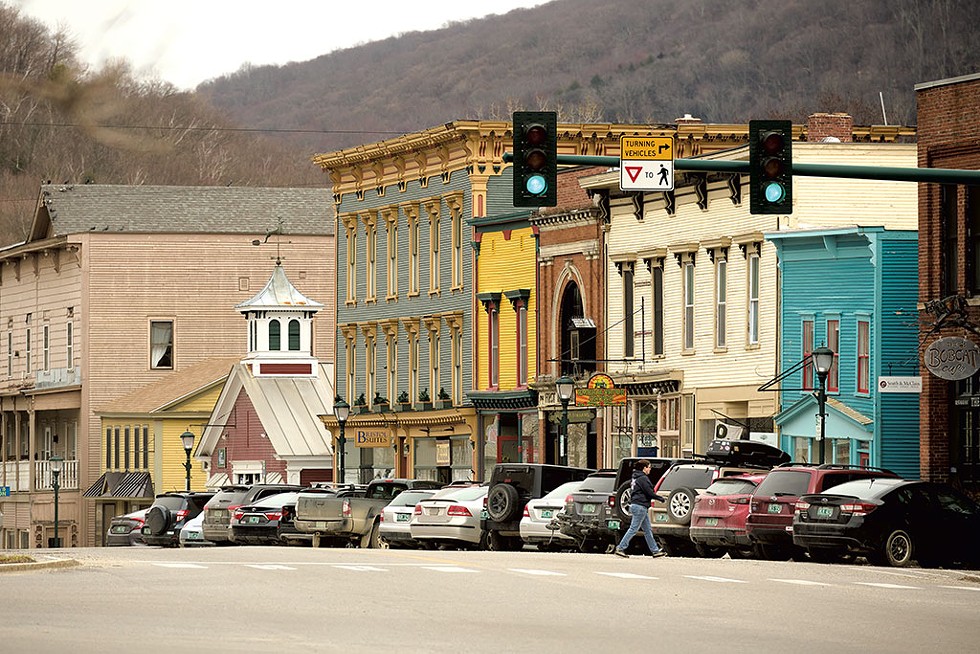
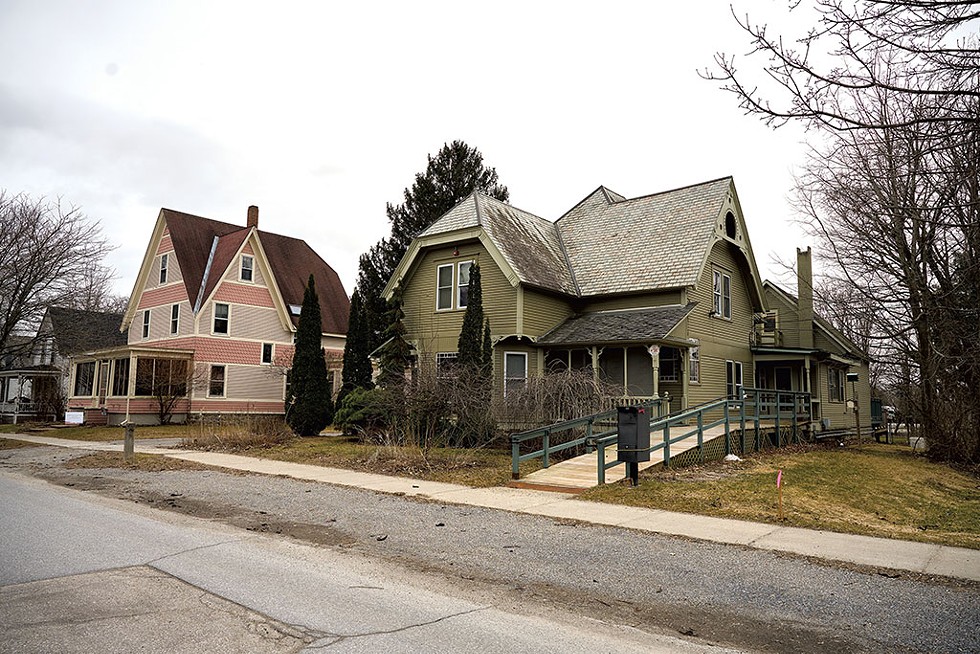



























find, follow, fan us: